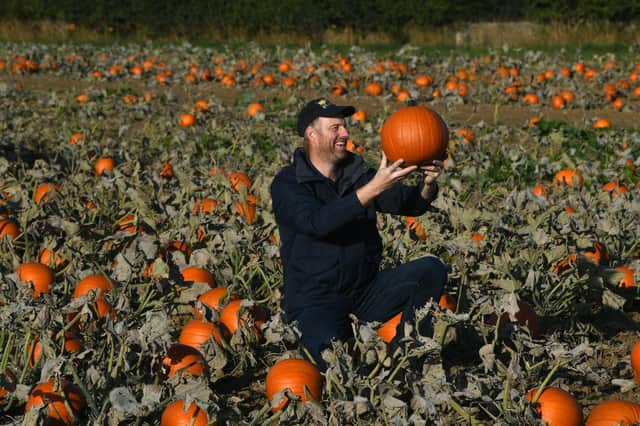Top 10 gardening jobs for October
This article contains affiliate links. We may earn a small commission on items purchased through this article, but that does not affect our editorial judgement.


The gardening experts at GardeningExpress.co.uk have put together the most important jobs to get done this Autumn which include planting final veg like garlic and onions.
It’s also important to prepare the garden for colder weather by adjusting your watering schedule and bringing delicate container plants indoors.
Advertisement
Hide AdAdvertisement
Hide AdChris Bonnett, founder of Gardening Express said: “October is a key time for gardeners, it’s time to prep the garden and get it ready for some colder weather.
“The first frost usually comes between September and November, so you’ll want to adjust your watering schedule according to the weather to avoid freezing the roots of your plants as well as bringing more delicate plants inside.
“You can also plant some vegetables if you never got the chance earlier in Spring. You can go ahead and plant garlic and even some varieties of onions and these will be ready to harvest around mid-summer.”
10 Gardening Jobs for October:
Harvest pumpkins
If you’ve planted your own pumpkins in time for the spooky season then now is the time to harvest them. You’ll want to do this pretty early on if you can to avoid any frost ruining your hard work.
Continue building your compost bin
Advertisement
Hide AdAdvertisement
Hide AdOctober is a good time to continue building your compost bin and if you don’t have one already, now's a great time to start. You can begin to collect fallen leaves that drop throughout autumn as well as collecting grass clippings from your final lawn trim before the winter hits.
Prepare for frosts
The first frost is known to strike anywhere between September and November in the UK so if you haven’t thought about this already now is the time to get prepared. For example, you may want to consider bringing in container plants or moving them to a greenhouse.
Trim hedges
Now is a good time to trim any garden hedges you have. Their growth will be slowing down so cutting them now will mean they have more chance of staying in shape throughout autumn and winter. Shears will work fine when trimming hedges, but if you’re after a sharper look you may want to consider a powered hedge trimmer.
Clear the pond
If you have a pond don’t forget to keep on top of clearing out any fallen leaves and debris to keep it an inviting environment for wildlife.
Give the lawn some TLC
Advertisement
Hide AdAdvertisement
Hide AdWe’ve had quite the heatwave in the UK so you’ll want to give your lawn some extra care to bring it back to life. It’s also a good idea to aerate your lawn with a garden fork to avoid any waterlogging. It will also allow oxygen and those all-important nutrients to really sink in and reach the roots of your grass.
Plant garlic
October and November is the best time to plant garlic because it needs a cold environment for a couple of months to help with the development of the bulbs. Break up the bulbs and place them into soil around 3cm below the surface.
Don’t forget about autumn onions
If you never got round to it in spring, now is your last chance to plant some autumn onions. Varieties like Radar and Electric Red can be planted now and will be ready to harvest around-mid summer.
Keep an eye on your watering schedule
It’s important to adjust your watering schedule according to the weather. You’ll want to keep an eye on when temperatures look like they’re about to drop, then you can water plants a few days before this to ensure that you don’t freeze the roots.
Don’t forget the greenhouse
Advertisement
Hide AdAdvertisement
Hide AdIf you have a greenhouse remember to remove any shading that you may have set up for the summer. You may even want to start to consider setting up a heater as we approach autumn and winter. To continue to prevent the spread of fungal diseases, ensure you’re regularly clearing the inside from any fallen dead plant material.